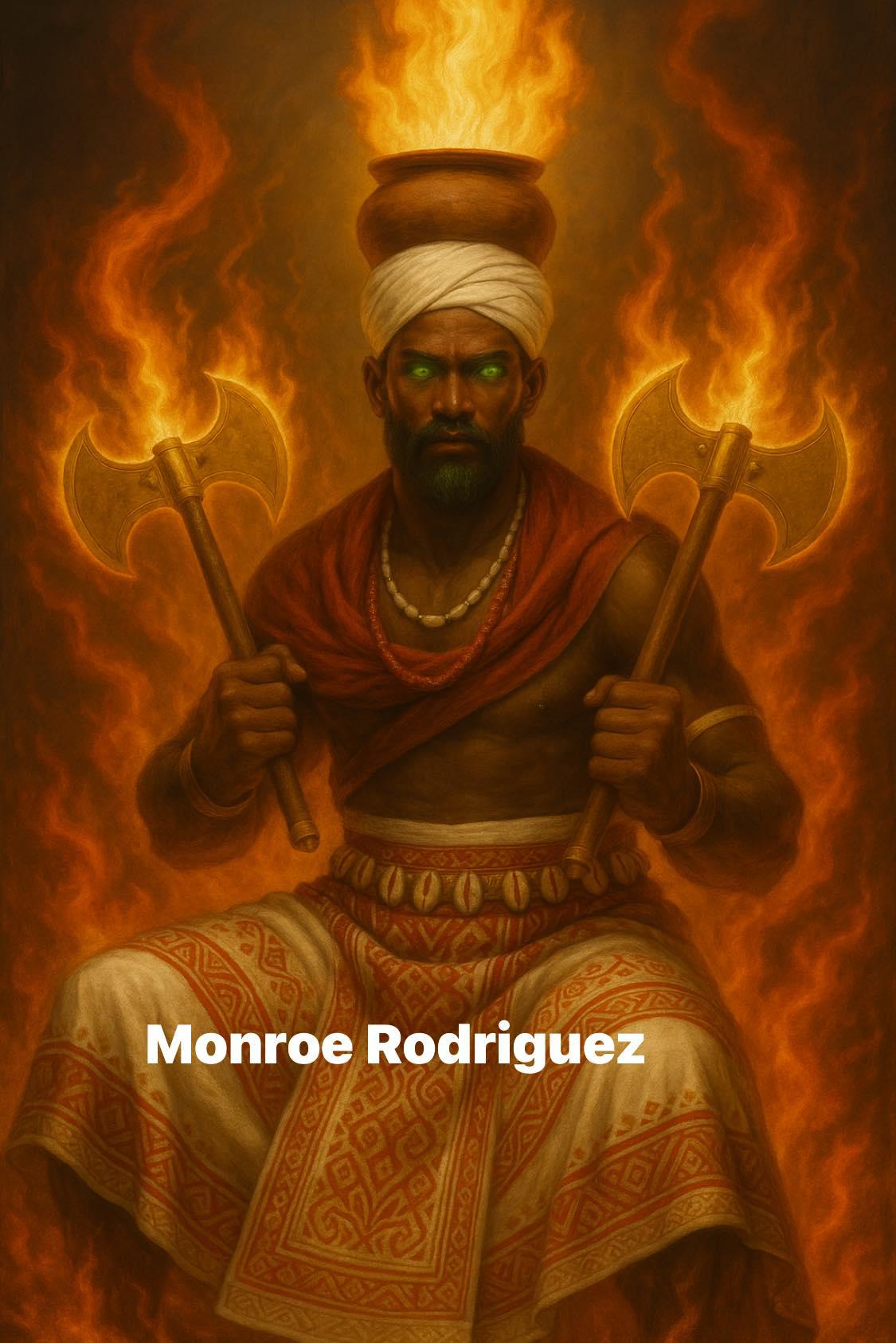
Airá: The Royal Paradox of the Orisa—Thunder, Wind, and Kingship in Yoruba Cosmology
Within the complex hierarchy of the Yoruba Orisa, the figure of Airá stands apart as both a paradox and a bridge: at once thunderous and temperate, fierce and gentle, singular and multifaceted. Airá is an Orisa whose identity, myths, and cult practice reveal profound lessons about power, justice, and the subtle distinctions within Yoruba spirituality.
Origins and Identity
Airá (also spelled Ayrá, Arira, Ajirá) occupies a special position within the Orisa pantheon. Sometimes described as a distinct Orisa, sometimes as a unique avatar or path (camino, qualidade, or modo) of Sango (Ṣàngó)—the Orisa of thunder and lightning—Airá is deeply embedded in both Yoruba homeland traditions and the spiritual lineages of the diaspora, especially in Candomblé (Brazil) and Santería/Lukumí (Cuba).
Airá is typically understood as a younger or “cooler” aspect of Sango, representing the winds and the more temperate, rational side of the thunder divinity. Oral literature describes Airá as a king of Koso, a master of wind (as distinct from lightning), whose reign was marked by justice, temperance, and the balancing of conflicting energies. While Sango is fire and tempest, Airá is wind and rain, bridging power and restraint.
Theological Significance
The veneration of Airá underscores several key Yoruba spiritual principles:
- Multiplicity within Divinity: The Orisa are not rigid, singular entities. Airá demonstrates the capacity for a deity to embody multiple forms, temperaments, and even moral lessons, reflecting the complexities of human life.
- Power and Restraint: Airá’s association with wind (as opposed to Sango’s lightning) highlights the value of moderation, justice, and adaptability. In oral tradition, Airá is often praised for bringing peace, clearing away conflict, and reigning with dignity.
- Distinct Cultic Practice: Unlike Sango, who is associated with intense drumming, fiery rituals, and red and white colors, Airá’s rituals are more subdued. In the African and Afro-diasporic context, Airá’s colors are typically white (sometimes with silver), and his offerings and songs are distinct from those of Sango. Airá is not offered ram or palm oil, but rather white foods and gentle offerings.
Airá in the Diaspora
In Brazil’s Candomblé (especially in Ketu and Angola nations) and in the Cuban Lukumí tradition, Airá is often understood as an Orisa in his own right, sometimes considered the elder brother or cousin of Sango, and sometimes as his peaceful aspect.
- Ritual Distinctions: In Candomblé, Airá’s initiation, songs, and offerings are carefully separated from those of Sango/Xangô.
- Symbolic Attributes: Airá carries the axe (ose), but his regalia and accoutrements are often more refined, emphasizing his royal, judicial, and temperate nature.
The continued reverence for Airá in the diaspora is a testament to the adaptability of Yoruba religious traditions, and to the importance placed on recognizing subtlety and nuance within spiritual archetypes.
Symbolism and Social Lessons
Airá’s mythology serves as a counterpoint to the dangers of unchecked power. Where Sango’s thunder can destroy, Airá’s wind can heal, cool, or clarify. In Yoruba thought, this duality is not a contradiction but a necessary balance, teaching that true kingship or leadership depends on knowing when to wield force and when to apply reason and restraint.
Conclusion
Airá embodies the Yoruba appreciation for complexity, moderation, and the many faces of spiritual power. Through Airá, devotees learn that strength is not only found in thunder and fire, but also in the steady, clarifying wind that brings peace after the storm. His veneration across continents reminds us of the richness and adaptability of Orisa traditions, and of the profound moral and metaphysical lessons embedded in their stories.